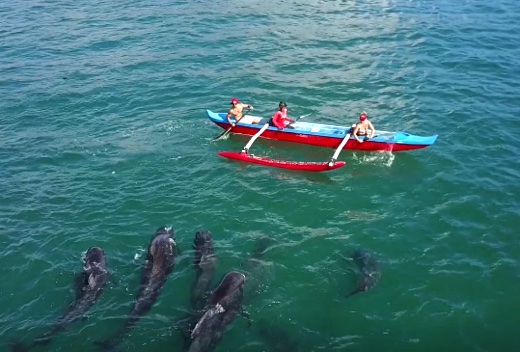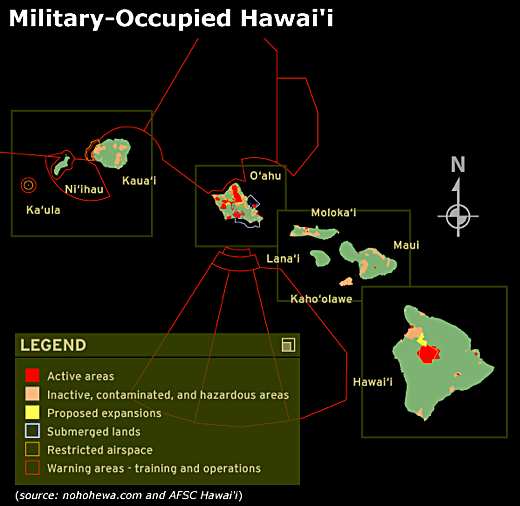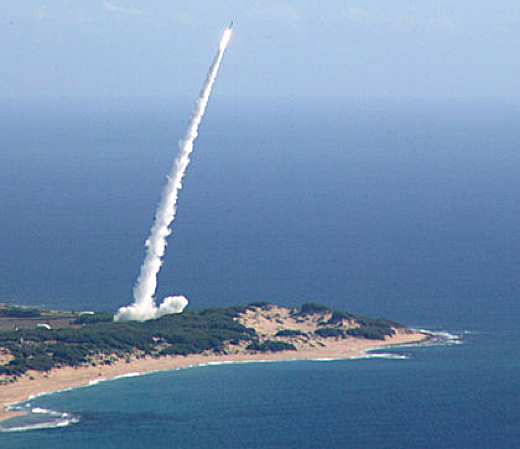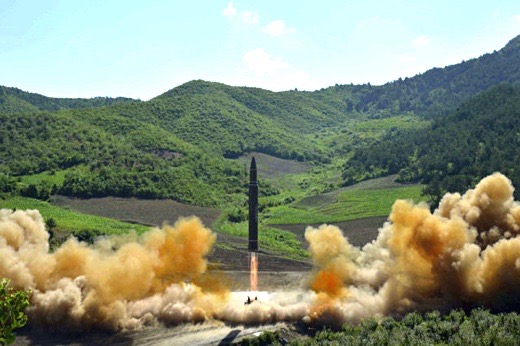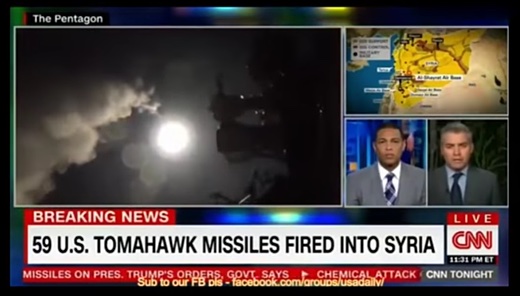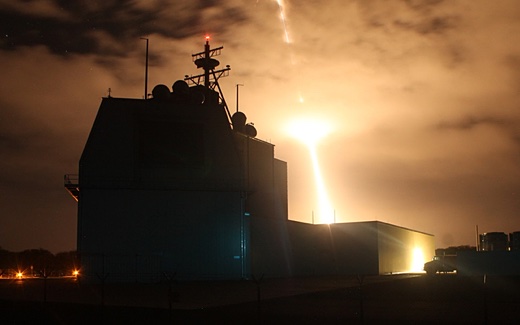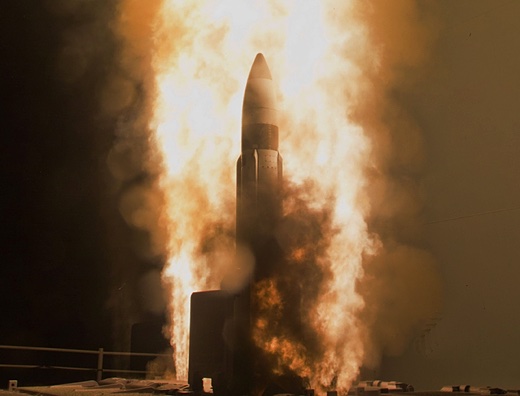SUBHEAD: American military excess in a region scarred by militarism and an ongoing legacy of war without end.
By Jon Letman on 14 May 2017 for Truth Out -
(
http://www.truth-out.org/op-ed/item/23688-the-militarized-pacific-an-anniversary-without-end)
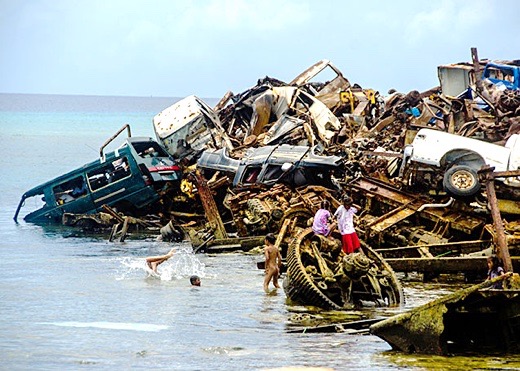 Image above: Marshallese children swim and play amongst a junk heap on the shore of tiny Ebeye island, one of the most densely populated places on earth. Some 11-12,000 people are packed onto the 80 acre island. Photo by Richard Ross. From original article.
Image above: Marshallese children swim and play amongst a junk heap on the shore of tiny Ebeye island, one of the most densely populated places on earth. Some 11-12,000 people are packed onto the 80 acre island. Photo by Richard Ross. From original article.
March 1, the 60th anniversary of the Castle Bravo test - a nuclear detonation over a thousand times more powerful than the bomb that destroyed Hiroshima - has come and gone.
Predictably, major decadal events, like a
15-megaton explosion over a Micronesian atoll, garner fleeting attention, but it's all the days between the anniversaries that tell the real story of those who live with the impacts.
For the people of the Marshall Islands, where Enewetak, Bikini and neighboring atolls were irradiated and rendered uninhabitable by 67 nuclear tests between 1946 and 1958, the brief anniversary recognition only underscores what little attention the Marshallese and, in a broader sense, millions of peoples of the Asia-Pacific are given by the US government and public.
The Marshallese, like people across the Pacific, live with impacts of plans devised at the United States Pacific Command (USPACOM) headquarters in Hawaii. After the Pentagon, PACOM is one of the world's most far-reaching military command centers.
With a self-proclaimed "Area of Responsibility" that absorbs half the world's population and covers roughly half the planet from the Arctic to the Antarctic, across the Indian Ocean and from Central Asia to the Central Pacific, it gives new meaning to the word "vast."
Generally, the US public gives little, if any, thought to the impact their military has on entire societies, economies and the natural environments that sustain them - as they pursue "American interests" and "national security" under America's self-dubbed
first Pacific president.
Many Americans are aware of the US military presence in Hawaii, Okinawa, Guam and throughout Japan and South Korea. Those old enough may recall the now-closed naval base at Subic Bay in the Philippines and might have noticed President Obama's 2011 announcement of an Asia-Pacific pivot.
Part of the pivot includes the
deployment of up to 2,500 Marines, along with B52 bombers, FA18s, C17 transport aircraft and other military hardware, to Northern Australia and a naval base in Western Australia.
However, places like the US-backed naval base being built on South Korea's Jeju island and the enormous military testing and training ranges in the Northern Mariana Islands (larger than much of the western United States) receive almost no attention. Names like Pagan, Rongelap and Kwajalein are scarcely known in the country that uses these islands for its own military testing.
Something to Prove
Nowhere are the costs of a militarized Pacific better illustrated than in the Republic of the Marshall Islands (RMI). The tiny Micronesian nation, located between Hawaii and Guam, has just 53,000 people. The Marshallese are a young population - the median age is just over 19 years old - yet the country is burdened with some of the highest cancer rates in the Pacific following 12 years of US nuclear tests in what was called "the Pacific Proving Grounds."
Dr. Neal Palafox of the John Burns School of Medicine at the University of Hawaii has been working in the RMI on and off since the 1980s. Palafox says health impacts are not limited to elevated cancer rates (especially cervical, breast and liver) and birth defects, but include heart disease, diabetes, stroke, hepatitis, obesity and substance abuse that stem from the dramatic changes the country has undergone since the 1950s.
"The rapidness at which [Marshall Islanders] had to enter Westernization is a large part of the cause of the non-communicable diseases which are lifestyle and diet [related]," Palafox says, adding that increased levels and types of cancers in the Marshall Islands, based on National Cancer Institute (NCI) research and firsthand accounts by Marshallese, are the result of nuclear testing.
In a
series of eight papers published in the journal Health Physics, the NCI found average thyroid radiation doses in the southern Marshall Islands ranged from 12 to 34 megarays (mGy), in the mid-latitudes from 67 to 160 mGy and in the northern inhabited atolls (closest to the nuclear tests) from 760 to 7,600 mGy. In the mainland United States, the report notes, exposure to natural radiation in the environment is 1 mGy.
The militarization that continued after World War II led to sweeping societal changes for the Marshallese as the combination of forced evacuations and relocations due to nuclear testing and the lure of jobs at the military base on Kwajalein Atoll led to rapid urbanization.
Today three-quarters of the country's people live on just two tiny islands - the capital Majuro and Ebeye Island, part of Kwajalein Atoll, home to the Ronald Reagan Ballistic Missile Defense Test Site (RTS), one of the premier missile testing facilities in the Pacific.
Founded in the 1960s, RTS supports the US Space Surveillance Network, the Missile Defense Agency and AEGIS Ballistic Missile Defense testing which contributes to the land-based missile systems the US is preparing to deploy in Poland and Romania.
"Slum of the Pacific"
Three miles north of Kwajalein's main island is Ebeye. At 80 acres, it's little more than a speck of dry land but it's home to an estimated 11,000-12,000 Marshallese, making it one of the most densely populate places on Earth. Over half the population is under 18 years old, largely supported by adults who commute daily to work at RTS as groundskeepers, kitchen workers, custodians or in clerical positions.
Noda Lojkar, who was born on Ebeye says, "The living conditions are really hard - it's bad, especially with power and water [shortages]." Lojkar is the consul general at the RMI's consulate in Honolulu, but has family on Ebeye and still regularly visits.
He says some 800 Marshallese work at RTS, each of them supporting around 14 people on Ebeye. Lojkar remembers less crowded times and a friendlier relationship with military personnel but says conditions have grown more rigid in recent years. "The base became stricter and stricter, and it changed people's mentality and how they looked at the Americans," he says.
After 9/11, Kwajalein island access for Marshallese grew tighter even when visiting in search of potable water. "On Ebeye, there's not enough water," Lojkar says, explaining that the military has multiple sources of water.
With almost no space to grow or raise food, Ebeye residents live mostly on imported rice, flour, canned meats and fish from the US or Australia. The tropical bounty found on other Pacific islands is in short supply on Ebeye, and simply traveling to another island to harvest food is impractical or impossible for those who don't have a boat, can't afford the expensive gas and don't own land on other islands.
A Life Changed
Life on Ebeye wasn't always like this. Giff Johnson, editor of RMI's sole newspaper, the
Marshall Islands Journal, has been visiting Ebeye since 1976. He's spent close to a year on the island and has watched as various bodies - the US military, the RMI and US governments, and most recently Australia - have tried to improve basic water, power and hygiene infrastructure.
The urbanization of not just Ebeye but the entire country, which began in the 1950s and 60s, saw people come from as far away as the Federated States of Micronesia (FSM) and Palau to work at "Kwaj." As outsiders converged on Ebeye, families grew, and conditions became what they are today.
Johnson, who lives on Majuro, describes how Marshallese visiting Kwajalein, have to go through gratuitous security checks that include multiple identification passes, X-rays, fingerprinting and even confiscation of possessions as innocuous as candy bars.
This treatment is disturbing to Marshallese inside their own country. "We're your allies, [we] vote with the US at the UN. We support you and work on the base. We're not al Qaeda. We are your partners," Johnson says, repeating the sentiment of many Marshallese.
RTS did not respond to a request for comment.
By hosting RTS, Marshallese must also submit to restricted access to Kwajalein lagoon before, during and after range operations - that is, when
missiles armed with dummy warheads are being fired from or into the lagoon.
Besides poor infrastructure, overcrowding and few job opportunities, Johnson says life is hard in the RMI's crowded urban centers, citing alcohol abuse, dropping out of school, high suicide rates and chronic health problems as contributing factors to RMI's high outward migration and disproportionately high rate of enlistment in the US military.
"Our industry here is government grants from the United States," Johnson says wryly. "That's our economy."
"Safe" Is a Relative Term
In the northern Marshall Islands, 150 miles east of Bikini, is Rongelap Atoll. Today, the main island is mostly empty, the majority of its population having been removed, relocated and then evacuated with the help of Greenpeace in 1985. The Rongelapese community is divided between remote Mejatto Island and Majuro.
Senator Kenneth Kedi represents Rongelap - his home community - in the RMI's parliament. Kedi describes how, following the nuclear tests, women on Rongelap began having "very unnatural babies - octopus-looking, grape-looking." He says a 1982 report by the US Department of Energy (DOE) confirmed that parts of Rongelap were as contaminated as Bikini.
In 1996, the US provided $45 million to the Rongelap local government for "environmental remediation and resettlement," but today less than $10 million remains and, according to Kedi, "we are not even close to ten percent of decontaminating our islands." A Nuclear Claims Tribunal awarded $1 billion for cleanup and compensation, but Kedi says, "[they] did not have the money. It did not even pay us a penny for that."
Despite this, in 2010 the US Department of Interior began pressuring Rongelapese to return to the island or face cuts in financial support. When Kedi asked a DOE official and scientist if it was safe to return to Rongelap they told him "safe is a relative term." That, Kedi says, sounds more like an environment for animals, not humans.
Kedi describes an ongoing health and environmental crisis that is the direct result of the United States but says, "a lot of our leaders in the [US] Congress have no understanding whatsoever of what took place in the Marshall Islands...they have no idea how grave the situation is..." He adds the same is true for the American public.
"There are still outstanding issues with this unique and great relationship that we have. The United States government needs to address the issue of the radiation legacy. We need to bring this to a closure."
Kedi spoke to Truthout by Skype from Majuro hours after the surprise announcement of a lawsuit that RMI filed against the nine nuclear nations at the International Court of Justice on April 24. Kedi likens the filing to David vs. Goliath but criticizes the lawsuit for its failure to address compensation.
"If [the lawsuit] were to include the issues of the Marshall Islands for compensation and health care and rehabilitation...then I would support that. Shouldn't we be focusing on our own issues that we are actually struggling with today - health care and contaminated land?" Kedi asks.
Resolving these outstanding issues, Kedi says, is not just a matter of dollars. "It's about doing the right thing...We just want peace and harmony like we used to have before the testing time."
"More Like Us Than Mice"
Today the Rongelap local government is working with Julian Aguon, a human rights lawyer in Guam. Aguon says too many people consider America's nuclear legacy in the Marshall Islands "a chapter that is closed in a book that has ended, it's relegated to the past."
"Oh, this was so tragic... and we're so sorry it happened but it's over," Aguon says, in a voice feigning concern. He says the US ignores a range of big issues and arguments and relied on a faulty study about limited radioactive contamination. "It's very clear that everywhere in the Marshalls was contaminated - not just four atolls."
The ongoing fear of radiation, Aguon says, is part of the reason why so many people have left the RMI, taking advantage of a special agreement that allows visa-free US residence for nationals of the RMI, FSM and Palau. These
compacts of free association (COFA) are full of major shortcomings, not the least of which is the requirement to be taxed like a US citizen but with the burden of heavily restricted health care access. COFA has led to sizeable Marshallese communities in Hawaii and places like Salem, Oregon, and Springdale, Arkansas.
"To put it in historical context, these people aren't able to trust anything that the US says only because in 1957 they were moved back with a very clear plan that they were going to be purposefully exposed to long-term low-level radiation. Not the acute exposure right after the bomb but the inhalation and the consumption of the food," Aguon says.
Aguon describes the Marshallese as having been "corralled together and made the unwitting subjects of non-consensual medical experimentation after the Bravo nuclear test."
In a 1956 Atomic Energy Commission meeting, Merril Eisenbud, director of the AEC Health and Safety Laboratory, described the Marshallese thus: "While it is true that these people do not live, I would say, the way Westerners do, civilized people, it is nevertheless also true that these people are more like us than the mice."
"We, in these far-flung places," Aguon says, "[have] a sense that American civil society really bears a greater responsibility for trying to arrest the spread of certain juggernaut forces like militarism that is being perpetuated in their name by their government for their safety."
(Another) Asia-Pacific Pivot
The plight of the Marshall Islands is the back-story of today's increasingly militarized Asia-Pacific, but David Vine, associate professor of anthropology at American University, sees nothing particularly new about Obama's Asia-Pacific pivot.
"Very early on islands were identified as playing a very important role in expanding the reach of the United States, and US commerce in particular," Vine says, citing early US military forays into Okinawa and the tiny Bonin (Ogasawara) Islands southeast of Japan. In the 1960s US nuclear weapons were kept in Okinawan ports and have been documented as passing through Japanese islands despite Japan's stated opposition to introducing and storing nuclear weapons.
Similarly, in 1987, the nation of Palau, under pressure from the US, dropped its opposition to the entry of US nuclear armed and powered vessels into its territory.
Vine talks about the post-World War II "forward posture" of creating a wall of Pacific islands as close as possible to Asia for its own strategic interests. He describes Pacific island nations like the RMI, Palau and FSM as being technically sovereign but, like American Samoa, Guam, Saipan and the Northern Mariana Islands, effectively run as colonies.
Vine says these islands exist under conditions that overwhelmingly benefit US military interests, perhaps best illustrated by the US insisting on the "
right of strategic denial." This "right," claimed under COFA, grants the US exclusive military control over half a million square miles of the Pacific and includes provisions allowing for the use of RTS on Kwajalein through 2066 with the option to
extend to 2086.
Pointing to small Pacific outposts that lack "Burger King bases" (sprawling military bases loaded with recreational and other amenities), Vine says, "while sometimes military facilities might be quite limited, they often can form the nucleus for what could be a much larger base." He says austere bases with small numbers of personnel or "temporarily embedding" US forces within another nation's military base (Australia, Singapore, the Philippines), are part of the "lily pad strategy." Vine says what constitutes a US military base in name is often subject to semantic games, using words like "military place" instead of "military base."
According to the Department of Defense 2013 Base Structure Report, the US has just one military base in the Marshall Islands: RTS at Kwajalein. However, it also controls
10 other sites in the RMI which are not counted as bases because they don't meet the criteria of at least ten acres and $10 million PRV ("plant replacement value"). Regardless of the true number, in a country made up of just 70 square miles, every foot of dry land counts.
Vine has thoroughly documented the displacement of Chagos Islanders to make way for the US military base at Diego Garcia in the Indian Ocean in his book
Island of Shame: The Secret History of the US Military Base on Diego Garcia. He says the patterns of displacement in the Pacific, specifically the Marshall Islands, are similar to what happened at Diego Garcia.
Anniversaries Without End
According to Vine, this is a very dangerous time in the Asia-Pacific and the US is playing a largely unproductive role that is increasing danger and heightening tension between China and other nations. "The presence and build-up of US bases," he says, "is not the way to ensure peace and security in the region."
In the coming months, the world will mark the 70th anniversary of Pacific battles in Saipan, Guam, the Mariana Islands, New Guinea, Palau, the Philippines and Burma.
More anniversaries will be recognized next year to commemorate battles in Bataan, Manila and Iwo Jima, followed by anniversaries of the firebombing of Tokyo, the battle of Okinawa and then, in August 2015, the destruction of Hiroshima and Nagasaki.
Each event represents death and destruction of the past in a region scarred by militarism and an ongoing legacy of war without end.
• Jon Letman is a freelance journalist on Kauai. He writes about politics, people and the environment in the Asia-Pacific region. Follow him on Twitter:
@jonletman.
.

